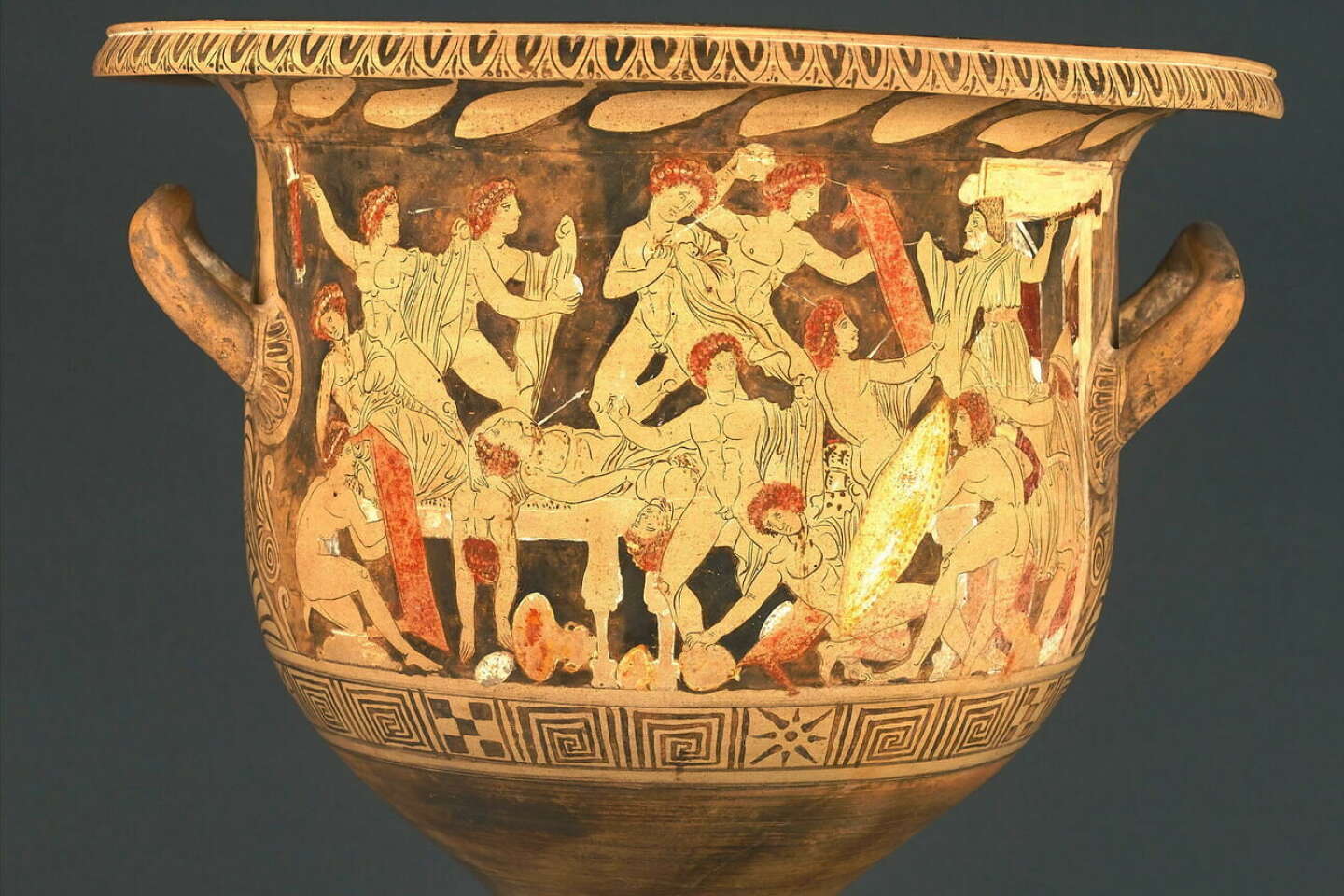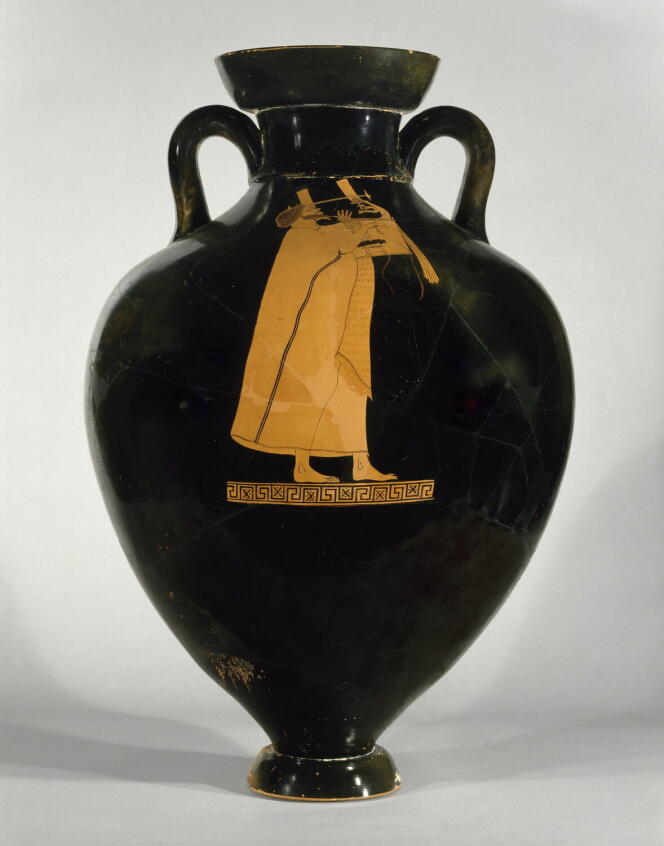
Italy demands the return of seven artifacts from the Louvre Museum
For fans of Greek, Etruscan, and Roman art, the Louvre Campana exhibition, named after the Marquis whose collection was acquired by Napoleon III, is a must-see. Its rooms, which were reopened to the public at the beginning of July after renovation, are filled with fine antiquities from the Old World. In the window, in particular, an amphora on a black background, dated V.H century BC. J. -C, attributed to the “Berlin Painter”, one of the great masters of Greek pottery, whose style is established, but whose identity remains unknown. On one side, a musician in profile plays the zither. On the other hand, a figure crowned with laurels extends her arm in an inviting gesture. The cartel omits one detail: according to information from worldThe Louvre has confirmed that the Italian state claims that this piece, along with six other artifacts, is of problematic origin.

The museum purchased them between 1982 and 1998, at a time when curators around the world focused their attention on the works’ authenticity, forgetting to worry about their provenance. The investigation, which is still ongoing, could lead to a landmark agreement between France and Italy in the fall. However, recognition of the Parisian Museum’s problematic purchases was not automatic. Thus, ten years have passed since the first suspicions and the start of dialogue between the two countries.
The story goes back to 1995. In the secret free port of Geneva, Swiss and Italian police raid the warehouse of a crooked Italian merchant, Giacomo Medici, and come across incredible loot. In addition to thousands of secretly excavated objects, investigators discovered five thousand Polaroids, as many as inventory cards listing works in various stages, from exhumation to pre-sale restoration.
This huge amount of documents, which will serve as exhibits during a resounding trial in 2003, made it possible to trace the entire chain, from Tomparoli (“grave robbers”), those little hands that dig things up in secret, to auction houses and dealers who, having set up shop, are responsible for laundering freshly plundered remains by giving them to museums and prestigious collectors.
“Discounts for the Louvre Museum”
Gianfranco Picchina, the Sicilian antiques dealer who runs the Palladion Gallery in Basel, is one of them. He himself furnished American billionaire Shelby White, benefactor of the Metropolitan Museum, and her husband, Leon Levy, as well as Getty’s villa in Malibu. but also the Louvre, from which he bought several important objects: a cartier of suitors, a fine specimen of an antique vase by the Ixion painter, another orifice in the manner of the Antimenes painter decorated with a mythological scene, also from a pair of nereids (mermaids) from Apulia.
You have 75.11% of this article to read. The following is for subscribers only.

“Unapologetic pop culture trailblazer. Freelance troublemaker. Food guru. Alcohol fanatic. Gamer. Explorer. Thinker.”
